实验3:OpenFlow协议分析实践
一、基本要求
(1)拓扑文件
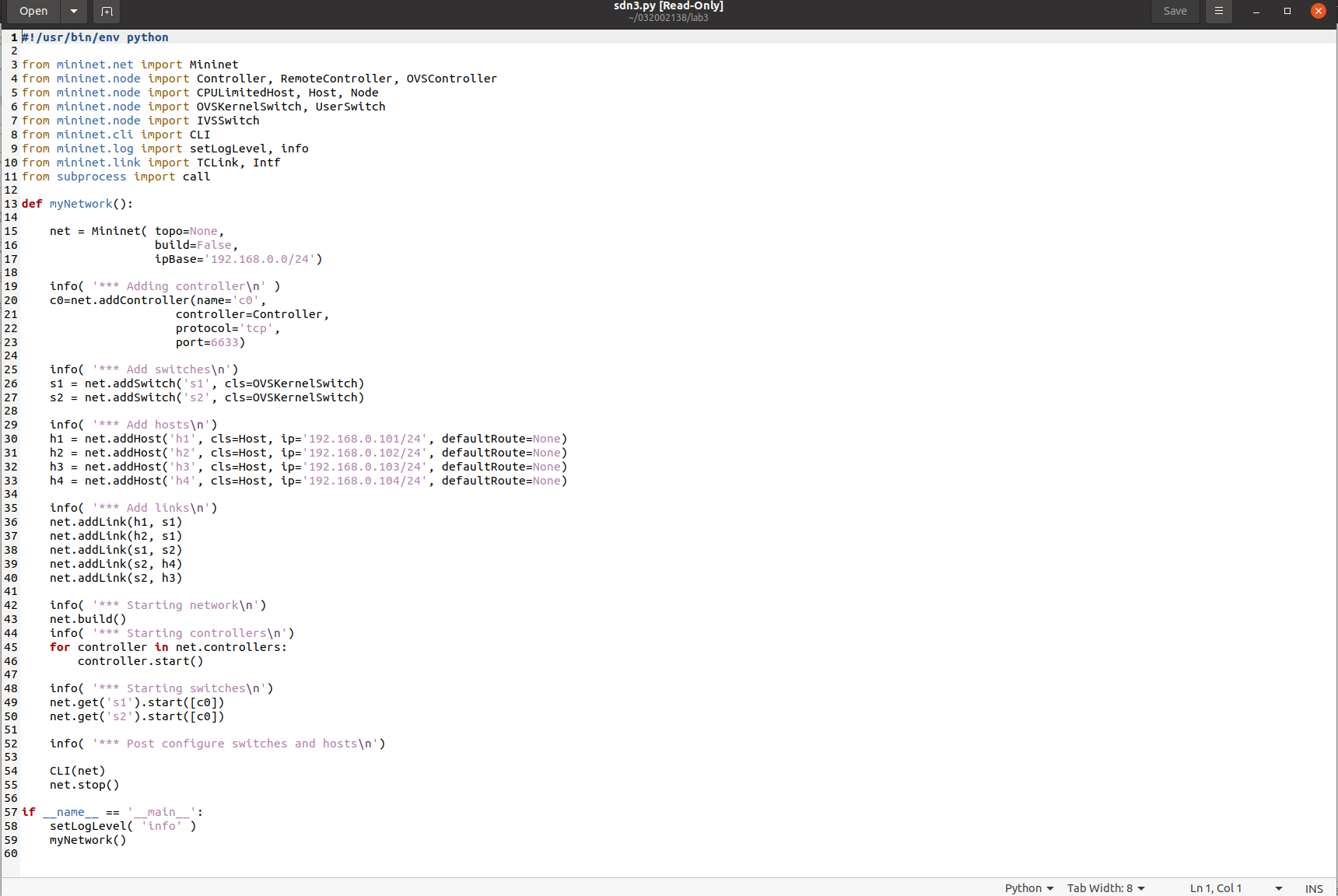
(2)wireshark抓包结果
1. hello
控制器6633端口 ---> 交换机33896端口
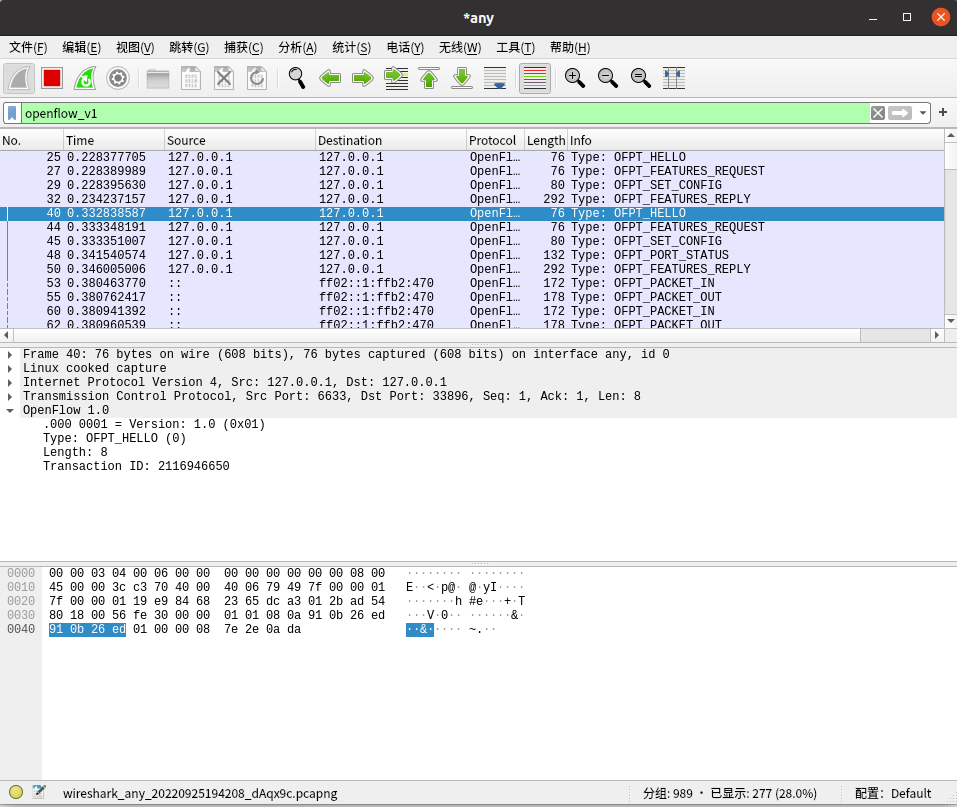
交换机33896端口 ---> 控制器6633端口

2. Features Request
控制器6633端口(我需要你的特征信息) ---> 交换机33896端口
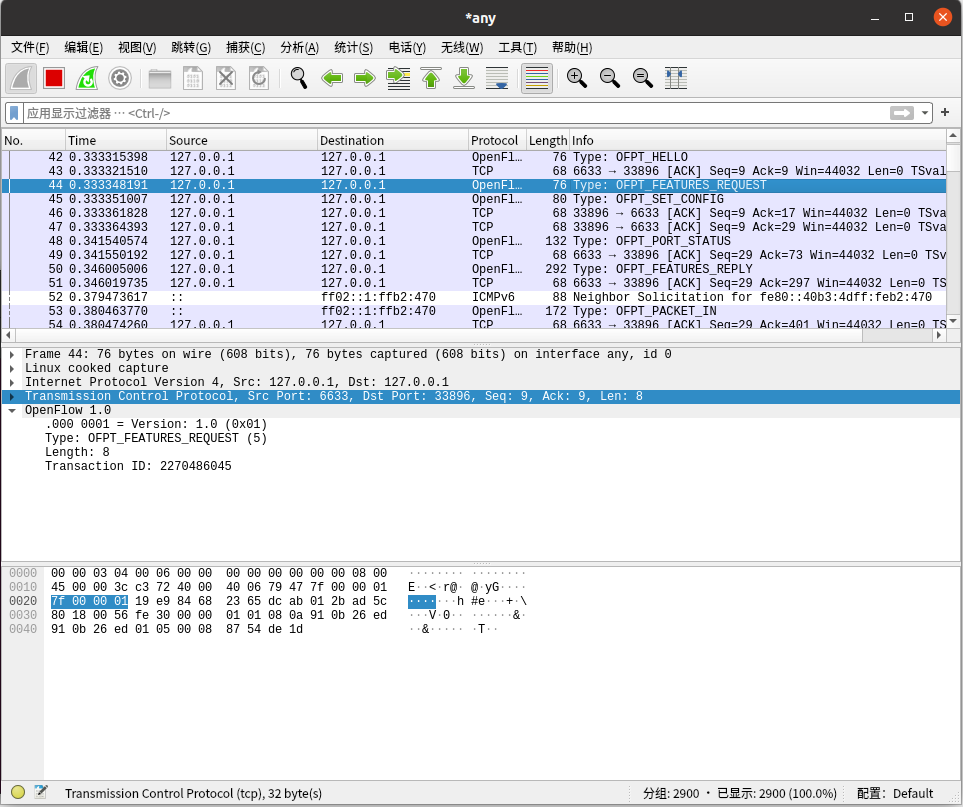
3. Set Config
控制器6633端口(请按照我给你的flag和max bytes of packet进行配置) ---> 交换机33896端口
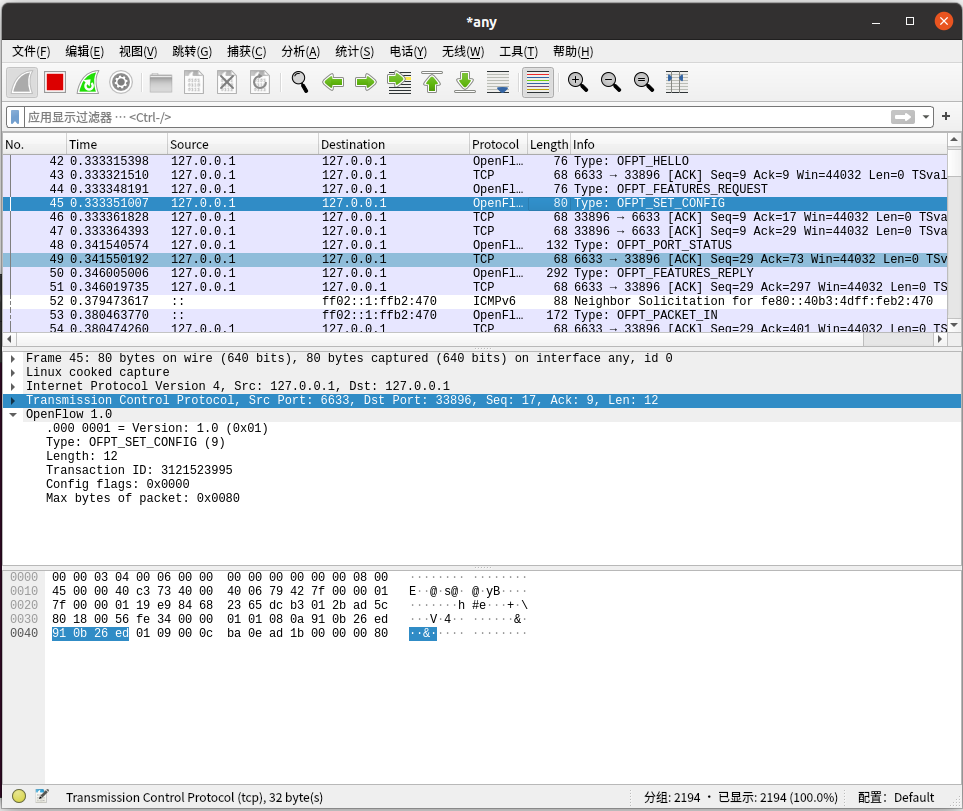
4. Port_Status
当交换机端口发生变化时,告知控制器相应的端口状态。
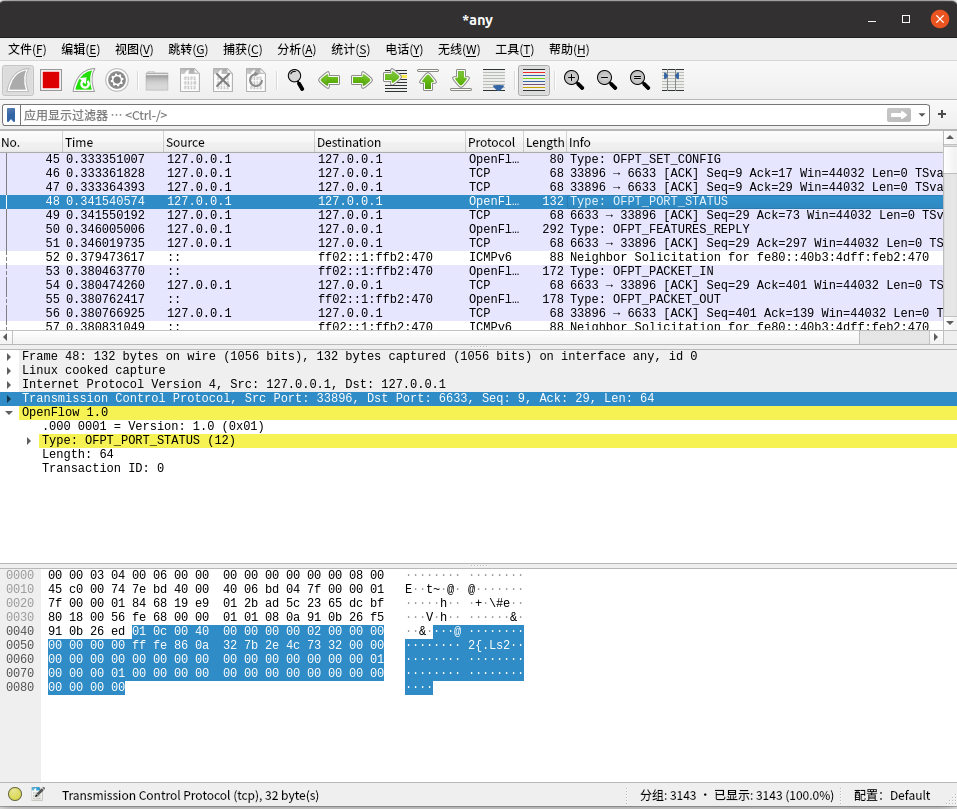
5. Features Reply
交换机33896端口(这是我的特征信息,请查收) ---> 控制器6633端口
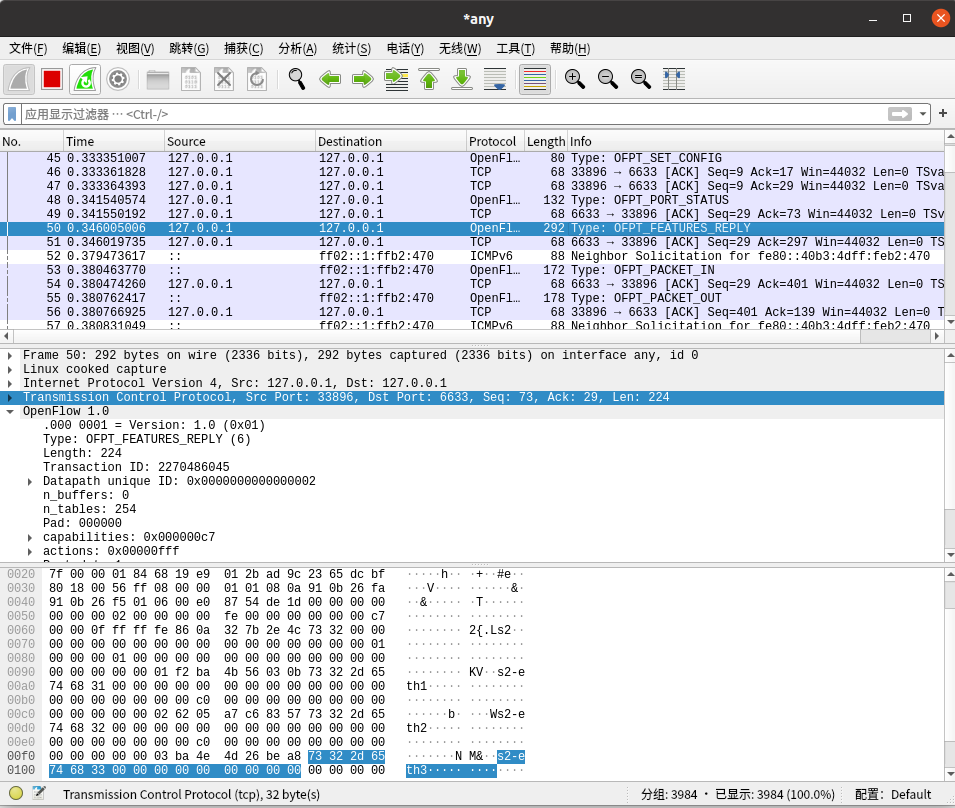
6. Packet_In
交换机33896端口(有数据包进来,请指示)--- 控制器6633端口
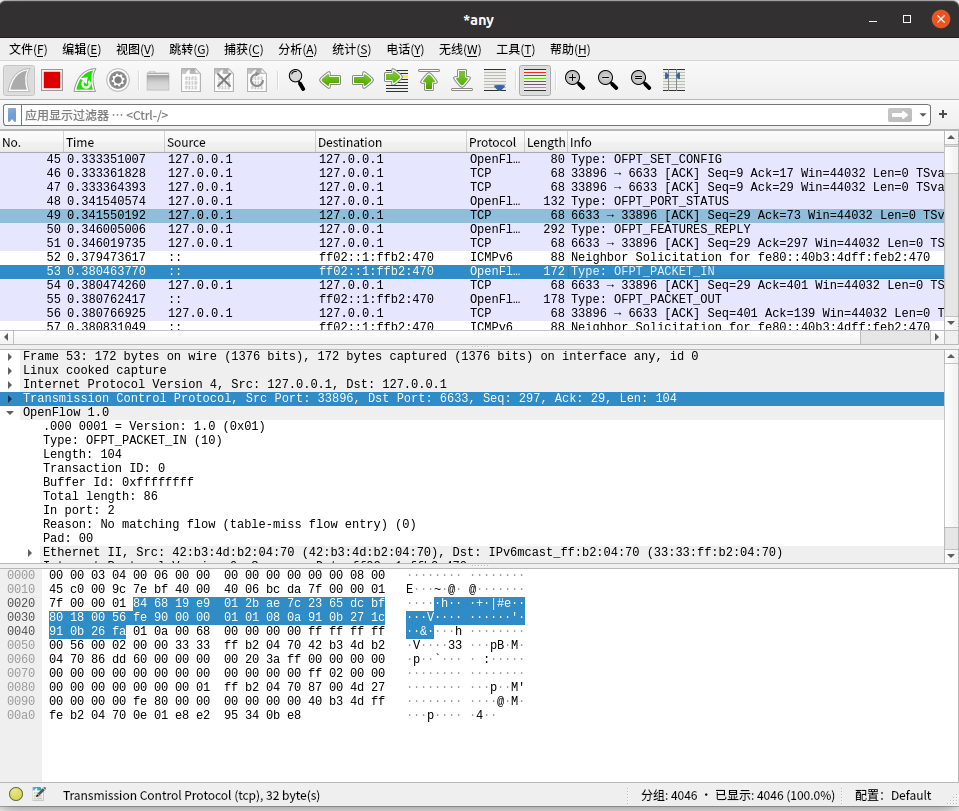
7. Flow_Mod


8. Packet_Out
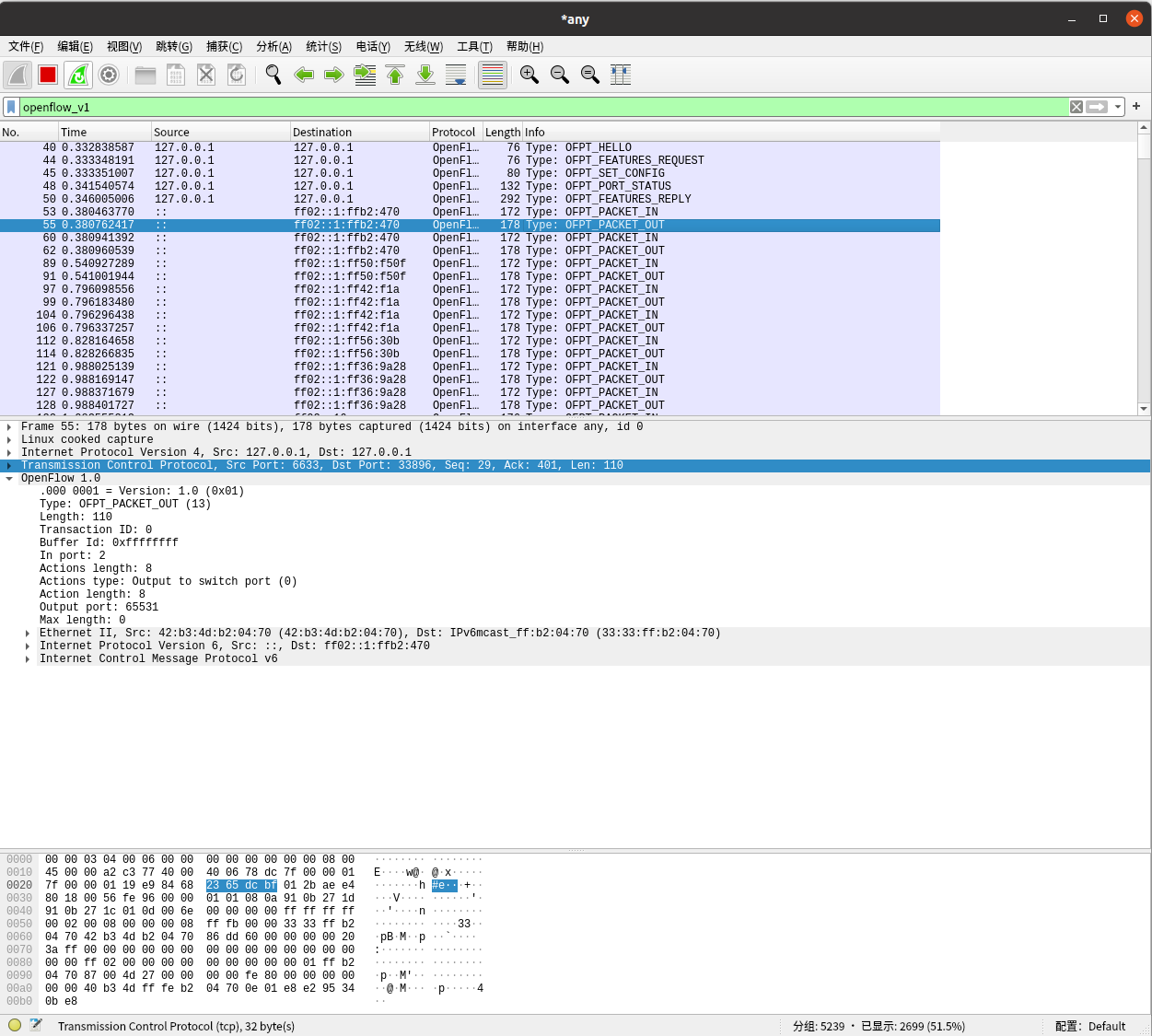
(3)查看抓包结果,分析OpenFlow协议中交换机与控制器的消息交互过程,画出相关交互图或流程图
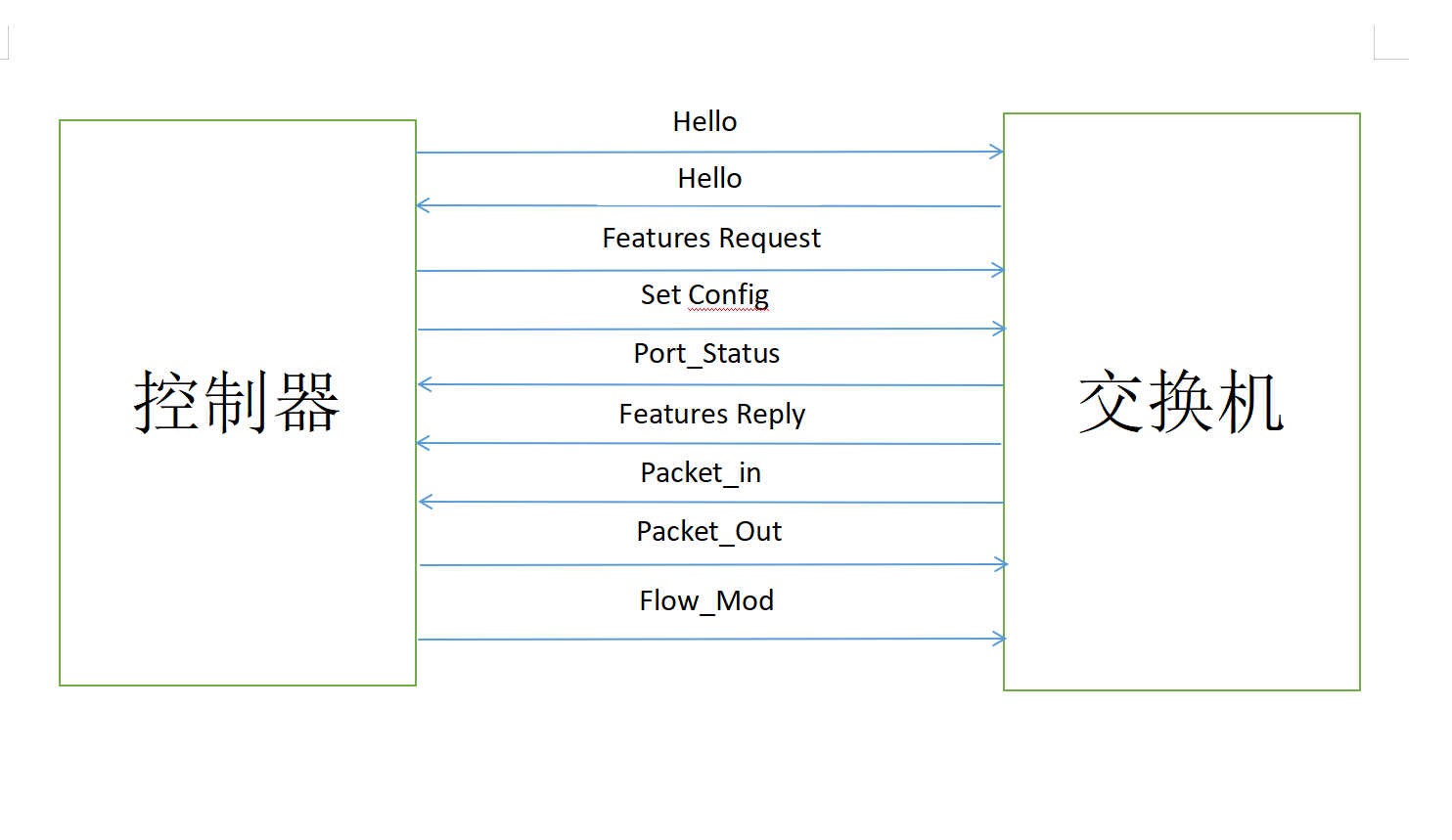
(4)回答问题:交换机与控制器建立通信时是使用TCP协议还是UDP协议?
通过报文信息可以看出,交换机与控制器建立通信时使用的是TCP协议。
二、进阶要求
1. hello
struct ofp_header {
uint8_t version; /* OFP_VERSION. */
uint8_t type; /* One of the OFPT_ constants. */
uint16_t length; /* Length including this ofp_header. */
uint32_t xid; /* Transaction id associated with this packet.
Replies use the same id as was in the request
to facilitate pairing. */
};
struct ofp_hello {
struct ofp_header header;
};
2. Features Request
struct ofp_header {
uint8_t version; /* OFP_VERSION. */
uint8_t type; /* One of the OFPT_ constants. */
uint16_t length; /* Length including this ofp_header. */
uint32_t xid; /* Transaction id associated with this packet.
Replies use the same id as was in the request
to facilitate pairing. */
};
3. Set Config
enum ofp_config_flags {
/* Handling of IP fragments. */
OFPC_FRAG_NORMAL = 0, /* No special handling for fragments. */
OFPC_FRAG_DROP = 1, /* Drop fragments. */
OFPC_FRAG_REASM = 2, /* Reassemble (only if OFPC_IP_REASM set). */
OFPC_FRAG_MASK = 3
};
4. Port_Status
struct ofp_port_status {
struct ofp_header header;
uint8_t reason; /* One of OFPPR_*. */
uint8_t pad[7]; /* Align to 64-bits. */
struct ofp_phy_port desc;
};
5. Features Reply
struct ofp_switch_features {
struct ofp_header header;
uint64_t datapath_id; /* Datapath unique ID. The lower 48-bits are for
a MAC address, while the upper 16-bits are
implementer-defined. */
uint32_t n_buffers; /* Max packets buffered at once. */
uint8_t n_tables; /* Number of tables supported by datapath. */
uint8_t pad[3]; /* Align to 64-bits. */
/* Features. */
uint32_t capabilities; /* Bitmap of support "ofp_capabilities". */
uint32_t actions; /* Bitmap of supported "ofp_action_type"s. */
/* Port info.*/
struct ofp_phy_port ports[0]; /* Port definitions. The number of ports
is inferred from the length field in
the header. */
};
6. Packet_in
/* Why is this packet being sent to the controller? */
enum ofp_packet_in_reason {
OFPR_NO_MATCH, /* No matching flow. */
OFPR_ACTION /* Action explicitly output to controller. */
};
/* Packet received on port (datapath -> controller). */
struct ofp_packet_in {
struct ofp_header header;
uint32_t buffer_id; /* ID assigned by datapath. */
uint16_t total_len; /* Full length of frame. */
uint16_t in_port; /* Port on which frame was received. */
uint8_t reason; /* Reason packet is being sent (one of OFPR_*) */
uint8_t pad;
uint8_t data[0]; /* Ethernet frame, halfway through 32-bit word,
so the IP header is 32-bit aligned. The
amount of data is inferred from the length
field in the header. Because of padding,
offsetof(struct ofp_packet_in, data) ==
sizeof(struct ofp_packet_in) - 2. */
};
7. Flow_mod
/* Flow setup and teardown (controller -> datapath). */
struct ofp_flow_mod {
struct ofp_header header;
struct ofp_match match; /* Fields to match */
uint64_t cookie; /* Opaque controller-issued identifier. */
/* Flow actions. */
uint16_t command; /* One of OFPFC_*. */
uint16_t idle_timeout; /* Idle time before discarding (seconds). */
uint16_t hard_timeout; /* Max time before discarding (seconds). */
uint16_t priority; /* Priority level of flow entry. */
uint32_t buffer_id; /* Buffered packet to apply to (or -1).
Not meaningful for OFPFC_DELETE*. */
uint16_t out_port; /* For OFPFC_DELETE* commands, require
matching entries to include this as an
output port. A value of OFPP_NONE
indicates no restriction. */
uint16_t flags; /* One of OFPFF_*. */
struct ofp_action_header actions[0]; /* The action length is inferred
from the length field in the
header. */
};
8. Packet_Out
/* Send packet (controller -> datapath). */
struct ofp_packet_out {
struct ofp_header header;
uint32_t buffer_id; /* ID assigned by datapath (-1 if none). */
uint16_t in_port; /* Packet's input port (OFPP_NONE if none). */
uint16_t actions_len; /* Size of action array in bytes. */
struct ofp_action_header actions[0]; /* Actions. */
/* uint8_t data[0]; */ /* Packet data. The length is inferred
from the length field in the header.
(Only meaningful if buffer_id == -1.) */
};
三、个人总结
本次实验较为简单,并没有多少需要操作的地方。比较需要注意的点就是要先开启wireshark抓包,然后才能运行拓扑,否则会导致部分需要截取分析的包丢失。一开始操作的时候弄错了顺序,就因此而造成了时间的浪费。同时还出现了找不到flow_mod的问题,但尝试着进行了一下pingall便顺利解决了。



 浙公网安备 33010602011771号
浙公网安备 33010602011771号